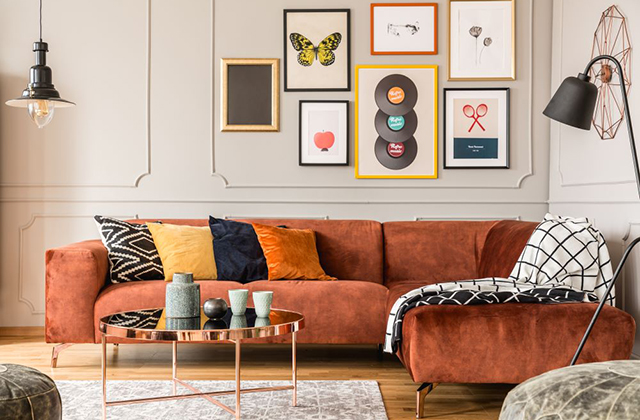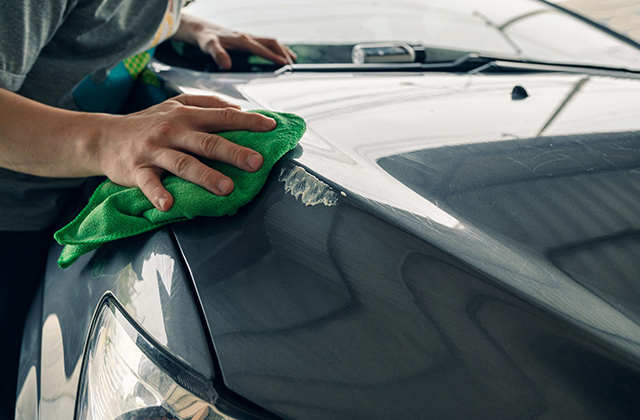The Landlords Boot
“Prevention is better than cure.” Nice proverb, but analytical pre-emption is better than both. Some things are predictable, even inevitable, like the proverbial “death and taxes.” Planning is unnatural – effort is required to provide solutions to alleviate the spectre of problems yet to manifest. Meantime, a lack of urgency placates all but the most determined to de-prioritise preparations. The natural tendency is to trade proaction for procrastination. Few could envisage an ambulance arriving at an emergency without oxygen or bandages on board – life and death situations allow no scope for such dereliction of duty. Maintenance is seldom critical – so sloppy disorganisation is tolerated. Preparation reduces stress, and once disciplined, requires far less effort. Ask yourself: “What is required to motivate kick-starting myself into action?”
Landlords conducting their own maintenance, take heart! The Landlord’s Boot focuses on being prepared for likely emergencies and maintenance matters, during the course of an academic year. How do we best prepare and utilise storage space within a vehicle: car, van, etc. In order to quickly access the requisite tools and spares to effect a speedy repair The Landlords Boot or vehicle is, ideally, compartmentalised into appropriately sized pockets, to hold the minimum number of specific spares likely needed at any time.
The aim is to avoid unnecessary time-consuming duplicate trips to DIY stores to procure items predictably needed, sooner or later. An efficient operative could instead, be onto the next job. Carrying a spare stop-cock can save more than time, it can prevent a leak becoming a flood! But without foresight such items are not to hand when needed.
Having everything one might need may be unwise. A problem with having a well stocked Landlords Boot arises when searching for what is needed amongst what is not. Too many spares clutters both the boot, and the mind. By the time the tidy boot has been emptied and hastily refilled during an emergency search, a leak might have become a flood. So how is a balance achieved between carrying too many, and too few, spares?
The first step is to analyse an average twelve months’ call-outs. Good record keeping makes this job very easy. Estate Agents have expensive software detailing exactly what, where and how many different categories of call-outs occur per year. At its simplest, this might translate into a printed laminate table of four seasons. Each season’s needs then correspond to the contents of the Landlords Boot . This table prompts progressive Boot change-overs at the turn of each season. For those without state-of-the-art software – experience and memory might need to suffice, until a clearer pattern emerges following the awareness of the need to keep records. In time, it will become apparent what is needed. The reason for twelve months analysis is logically that there are four seasons in a year – each with its’ own unique demands. In winter a broken down boiler might be an emergency, unlike in summer. So the contents of The Landlords Boot might vary to include small portable electric radiators in cold seasons.
During the summer, say between student tenancies, Shower and bath drains are likely to have a ‘plug’ of hair which, when it dries out, will solidify, blocking the drain. Hair disolver in a bottle can quickly be poured down each drain. Shower heads and hoses will likely need replacing. Llikewise, kitchen and bathroom mastic seals. Sealants – needed to replace defective or mouldy seals have short shelf-lives before solidifying in the tube, so order sparingly according to likely demand. Pay extra for mould-resistant mastic as it lasts much longer and the bulk of such costs is labour; so do it right first time! Such small jobs, if done in passing, can reduce maintenance between tenancies thereby reducing stress – but only if one has the means at the time to observe defects, say during inspections or unscheduled visits to attend emergency work.
The Landlords Boot should include separate compartments to store easily accessible tools and spares for each job.
The whole process only really works well if there is an occasional stock-take. So each time a spare part is consumed, it must be replaced when next at the builder’s merchant’s so it is ready for the next time it is required. Any broken parts are either binned or popped into a recycling bin. The latter parts should only be stored if there is a reasonable prospect that they can later be cannibalised, to repair, as opposed to replace other potential items. Avoid creating clutter by clinging to little used items. Ditch any used part worth less than £1 as it will cost more than it is worth to find it – buy new when needed. Do not stock items used less frequently than once a year, unless it would avoid a disaster to have it. We have all heard tales of those who throw our stuff only to need it a week later – if it had been kept it would never be found amounst all the other stuff that “might come in handy one day!”
In order to have a well-ordered Landlords Boot, a separate store is ideally required but not essential. An easily accessible garage lined with category-labeled shelves is perfect. This enables the boot to be re-stocked, without visiting the DIY store. Only when such a visit is essential are the used items re-stocked. An inventory enables each spare to be identified – as suggested below. This also shows items remaining, against the ideal number stocked. Pre-emptive time takes discipline, which is generously repaid in the reduction of waste, labour costs, stress, frustration, disasters and disappointments. The landlord able to remedy an instant repair is loved by his tenants, particularly if the service provided exceeds customer expectations. Often a tenant will wait until a visit to anounce a defective fitting. On one occasion I received a list and when I announced that all the parts required were in my vehicle and would be replaced before my departure. the tenants then enquired with some incredulity whether I had a large van? “No” I replied, “just a well stocked landlords boot.” Do you think they were impressed… ? Acolades of prase and recomendations followed for merely doing my job! Unused to such speedy response the student tenants thought it praiseworthy.
Landlords occasionally spot items missed by contractors which are more easily dealt with in-passing than by recalling contractors – but only if the boot is stocked.
The following is an example summary of a Landlords Boot. Tip: Always buy the same type of shower, vaccuum, hose, fridge, washer, etc so they will always be compatible reducing the amount of spares to stock.
Landlords Summer Boot: A series of labled categorised clear plastic containers allows sight of the contents from outside the crate or container for each category. Such intuitive logic narrows any search for spares in the one and only place it should be. Always file spares and tools in the space decided when creating the storage system to suit individual needs.
Safety – Apron, gloves, glasses, – fire extinguisher / blanket First Aid Kit.
Gardening tools – Secateurs, hedge trimmers and weed killer, etc. When awaiting a prospective tenant it is easy to prune while you wait – another job done with minimum effort adding to favourable first impressions and a sense the property is cherished, installing a perception it should be maintained so, by tenants!
Lights – Lamps/ Bulbs carry a selection as required for each house. Consider swapping incompatible light fittings with those most commonly used. Having spent a fortune one year doing just that, the cost was saved tenfold in electrician’s invoices. Any non-standard fitting is beyond the average tenant. Stick to basic consistent fittings.
Adhesives / Fixings – Tape PTFE / Gaffer / electrical, super glue, impact adhesive, screws, nuts and bolts. Anything that connects one thing to another.
Fillers – Mastic, Caulk / brown, white and magnolia – these are tall cylindrically shaped tubes ideally stored together with adhesive tubes. The nozzles are easily lost and are best kept separately in a nozzle container
Paint – Small quantity of white and magnolia emulsion for marks. A pencil rubber is similarly useful.
Cleaners: Carpet / kitchen and bathroom mouse, oven sprays, de-scaler, Washing-up Liquid for grease, “Oven Pride” bag for oven chrome, bleach, etc. Solvents like white spirit and WD40.
Sacks – Rubble sacks, bin-bag: black, purple concession sacks (Canterbury), vacuum cleaner bags.
Cloths – Dusters, scourers, sponges, ideal for mopping small leaks.
Utensils – Mop, small bucket, dust pan, brush, vacuum cleaner.
Spares – Shower heads / hoses/ washers, curtain hooks.
ToolBox – Torch, pump-pliers, drill, bits with special square tips for DIY assembly and repair, tape measure, Camera and Drill.
Keys – with unique access identifying codes.
The Landlords Winter Boot would be restocked to include: portable radiators, drain unblockers to dislodge fat solidified in cold pipes and a pipe splice kit – 15 and 22 mm to fix most split pipes.
Each business has its own peculiarities. The principles outlined here can be adopted to suit the needs of almost any business.
Article Source: http://EzineArticles.com/7151703



